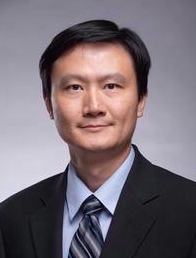Microfluidic Devices with High Resolution and Aspect Ratio for Neural Circuitry Modeling
Project 1: Microfluidic Devices with High Resolution and Aspect Ratio for Neural Circuitry Modeling
A neural circuit is a group of neurons interconnected to each other to perform certain function, while interconnected neural circuits form larger brain/neural networks. The study of neural circuits is important to help understand brain functions and the causes of neurological disorders such as autism spectrum disorder and schizophrenia. Traditionally, neural circuit characterizations are done by in vivo magnetic resonance imaging (MRI), which typically can only identify the circuit locations in the brain.
Existing microfluidic devices with separate compartments and interconnecting channels are used to culture neurons and study the circuitry. These devices are typically molded from PDMS in a planar 2D configuration. We are working on microfluidic devices made from molded thermoplastics such as COC, with very high resolution (<10 µm feature size) and aspect ratio (>20:1), and an integration approach capable of 3D configuration (T. Wang, et. al., IEEE MEMS 2021 Conference). Robust metal molds for the devices are made using the micro electro-discharge machining (µEDM), which is a computer-controlled, effective micromachining technique for patterning any conductive materials with micron-scale feature sizes. This tool is available in house at the MEMS and Autonomous Integrated Microsystem (AIM) Laboratory.
In this project, a microfluidic device for neuron culturing and neural circutry modleing will be designed, fabricated and tested. This summer project allows the Protege students to work with graduate students and be exposed to interdisciplinary research in the field of MEMS and microfluidics, collaborating with Cincinnati Children’s Hospital Medical Center and contributing to research tasks including literature review, design, hands-on microfabrication using the cleanroom facility, and testing in vitro of the fabricated devices. Multiple students can be accommodated.

Fig. 1: Concept of neuron culturing and recording device with assembled microfluidic component.

Fig. 2: Photos of: (a) 15 microchannels (200×10×30 µm3, L×W×H) on sidewall of molded plastic separator. (b) Photo taken through MEA substrate showing bond interface between separator and MEA chip, and alignment between channels and electrodes.

Fig. 3: (a) Dark field image of neurons and axons on the microfluidic MEA chip after two-week culturing. (b) Raster map of recorded spikes over 64 electrodes in the MEA in 10 sec period; inset shows sorted spikes from a single electrode from Plexon spike sorting software.
Wireless Magnetoelastic Sensors for Implantable Biomedical Applications
Magnetoelastic (ME) materials have been universally used as anti-theft security tags in shops. These materials exhibit the magnetostriction behavior in which the magnetic property of the material changes under mechanical deformation (strain). The application of such materials as sensors, particularly implantable microsensors for putting into the human body for biomedical applications, is of high interest due to its inherent passive wireless nature, which eliminates the needs for battery or antenna, leading to implanted devices with reduced complexity, size and cost. The micro electro-discharge machining (µEDM) is a computer-controlled, effective micromachining technique for patterning ME materials for sensor fabrication with the micron-scale feature sizes. This tool is available in house at the MEMS and Autonomous Integrated Microsystem (AIM) Laboratory. This summer project will allow the Protege students to work on the development of a ME sensor for biomarker detection with graduate students and be exposed to interdisciplinary research in the field of MEMS and microsystems, collaborating with UC School of Medicine and contributing to research tasks including literature review, design and simulation, hands-on microfabrication using the cleanroom facility, and testing in vitro and in vivo of the fabricated implantable microsensors. Multiple students can be accommodated.
Director

Tao Li
Associate Professor, CEAS - Electrical and Computer Engineeri
835 Rhodes Hall
Dr. Tao Li is an Associate Professor at the Department of Electrical and Computer Engineering (ECE) of the University of Cincinnati. Previously he was a research-track faculty member (Associate Research Scientist) and Adjunct Assistant Professor in the EECS Department and the Center for Wireless Integrated MicroSensing and Systems (WIMS2) at the University of Michigan, Ann Arbor.
Dr. Li’s research interests include MEMS and microsystems, micromachined sensors and actuators, microfluidic devices, nontraditional microfabrication technologies, microsystem packaging and integration, and sensor electronic interfaces and embedded systems. Example applications include implantable/ingestible biomedical devices for sensing/sampling/actuating, wearable devices for healthcare, smart medical tools with embedded sensors/actuators, in vitro devices for biomedical studies, harsh environment monitoring devices for challenging natural or industrial conditions, sensors for Internet of Things (IoT) and Cyber-Physical Systems (CPS), etc. He has served on the Organizing Committee and as a Technical Program Track Chair for the IEEE Sensors Conference from 2019 to 2024, and as an Executive Technical Program Committee Member for IEEE MEMS 2025 Conference. He currently serves as an Associate Editor for the IEEE Sensors Journal and on the Organizing Committee for the IEEE Sensors 2025 Conference.

